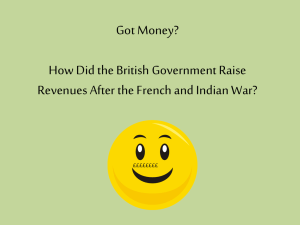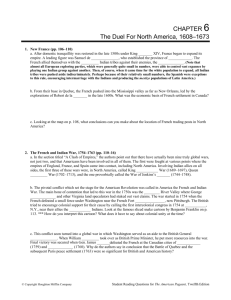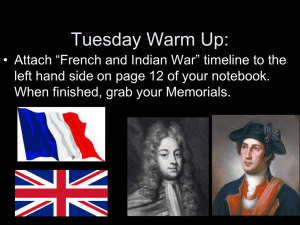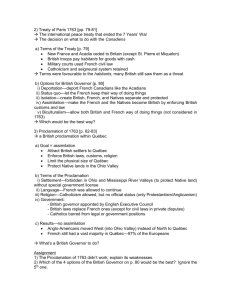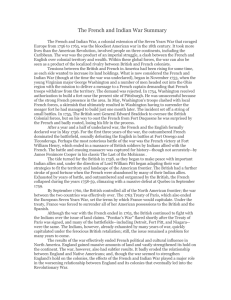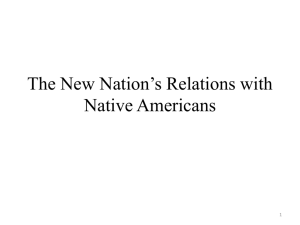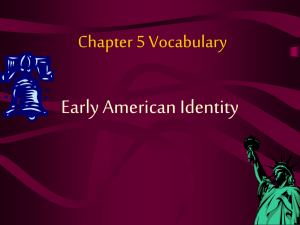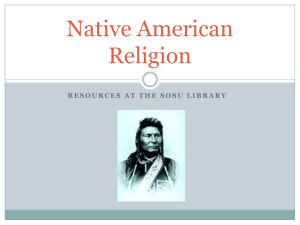Chapter 6
advertisement
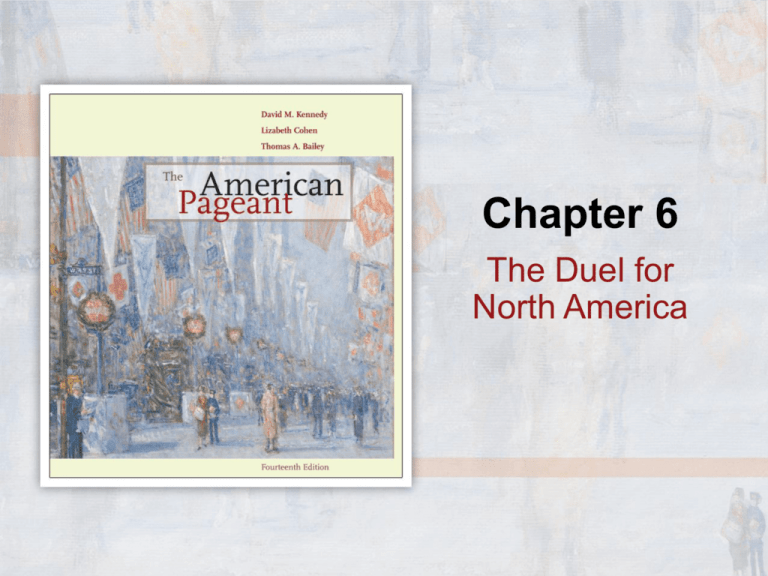
Chapter 6 The Duel for North America France’s American Empire at Its Greatest Extent, 1700 Québec Scene, by Jean-Baptiste-Louis Franquelin, ca. 1699 (detail) The metal cooking pot and the Indians’ clothing and blankets show the Native Americans’ growing reliance on European trade goods. Fur-Trading Posts To serve the needs of European fashion, fur-traders pursued the beaver for more than two centuries over the entire continent of North America. They brought many Indians for the first time into contact with white culture. Chief of the Taensa Indians Receiving La Salle, March 20, 1682, by George Catlin, 1847–1848 (detail) Driven by the dream of a vast North American empire for France, La Salle spent years exploring the Great Lakes region and the valleys of the Illinois and Mississippi Rivers. This scene of his encounter with an Indian chieftain was imaginatively re-created by the nineteenth-century artist George Catlin. Scenes of the French Wars The arrows indicate French-Indian attacks. Schenectady was burned to the ground in the raid of 1690. At Deerfield, site of one of the New England frontier’s bloodiest confrontations, invaders killed fifty inhabitants and sent more than a hundred others fleeing for their lives into the winter wilderness. The Indian attackers also took over one hundred Deerfield residents captive, including the child Titus King. He later wrote, “Captivity is an awful school for children, when we see how quick they will fall in with the Indian ways. Nothing seems to be more taking [appealing]… North America After Two Wars, 1713 New Englanders Capture Louisbourg, 1745 When the final peace settlement of 1748 returned this fortress to France, the American colonists felt betrayed by their British masters. The French and Indian War in North America, 1754–1760 Famous Cartoon by Benjamin Franklin Delaware and Georgia were omitted. Global Scale of the Seven Years’ War Among the first of the truly “world wars” of the modern era, the Seven Years’ War sucked in several nations who did battle around the globe. View of the Taking of Québec, 1759 On the night of September 13, British forces scaled the rocky cliffs of Québec and defeated the French army defending the city. The following year, Montréal, France’s last bastion in North America, surrendered. Fighting continued in the Caribbean, Europe, and the Philippines for two more years, until the Treaty of Paris was signed in 1763, eliminating France as a colonial power in North America. North America Before 1754 North America After 1763 (after French losses) Detroit, 1794 A key French outpost from 1701 to 1760, Detroit fell to Britain during the Seven Years’ War. The British remained at Detroit even after the American War of Independence, exciting bitter resentment in the infant American Republic (see pp. 183–184). British Colonies at End of the Seven Years’ War, 1763 This map, showing the colonies thirteen years before the Declaration of Independence, helps to explain why the British would be unable to conquer their offspring. The colonists were spreading rapidly into the backcountry, where the powerful British navy could not flush them out. During the Revolutionary War, the British at one time or another captured the leading colonial cities— Boston, New York, Philadelphia, and Charleston—but the more remote interior remained a sanctuary for rebels.
